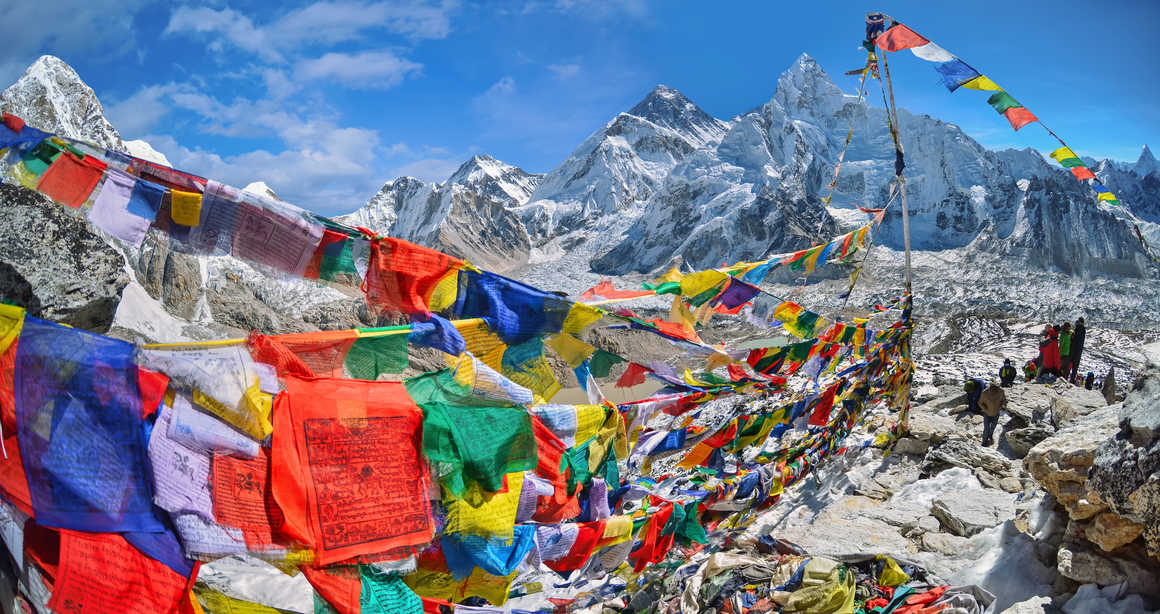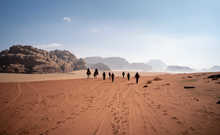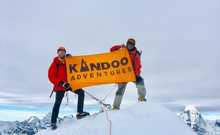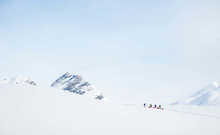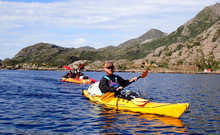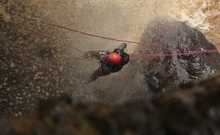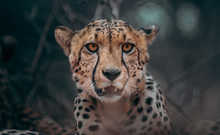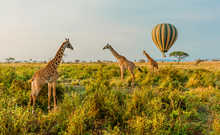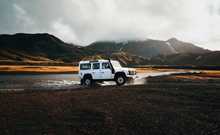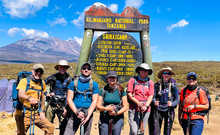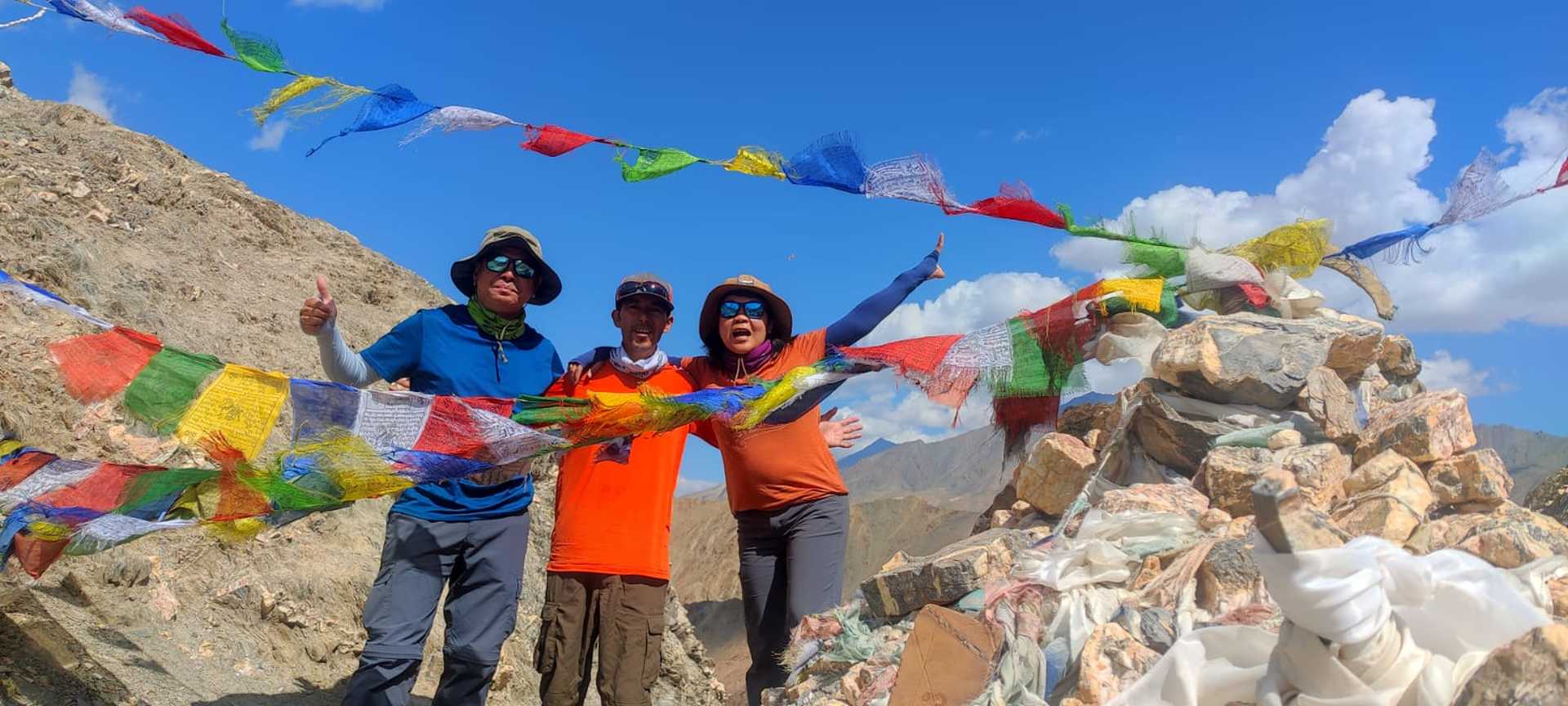Nepal FAQs
Nepal is home to mammoth peaks, breathtaking scenery and is almost entirely covered by the Himalayan Mountains, making it a dream destination for trekkers, climbers and mountaineers around the world. Of the world’s
14 highest peaks over 8,000m tall, 7 of these mountains are found in Nepal, including Mount Everest, the tallest mountain on earth at 8,849m high.
Whether it’s our classic
Everest Base Camp Trek or our extraordinarily beautiful
Annapurna Sanctuary trek, trekking in Nepal is an experience like no other. If you’re visiting Nepal with Kandoo and it’s your first time venturing to this incredible country, it’s understandable that you might have a few questions about vaccinations, visas, travel insurance, local customs, safety and more.
With almost 2 decades of experience guiding our trekkers through the peaks and passes of the Himalaya, the team at Kandoo HQ have a lot of knowledge about this beautiful part of the world and we’d love to share our Nepal travel advice with you. Below, we’ve answered some of our most
frequently asked questions about Nepal to help you prepare for your next adventure.
Before departure
What travel vaccinations do I need for Nepal?
The recommended vaccinations for Nepal are tetanus, typhoid, hepatitis A and diphtheria. Tetanus and diphtheria are part of your childhood immunisations in the UK so you may just need a booster.
You are required to have a Yellow Fever certificate if you are arriving from a country where yellow fever is endemic. If you are flying directly from the UK or US (airport transfers in other countries are permitted up to 12 hours) then you will not require the yellow fever vaccination.
Do I need a visa to visit Nepal?
If you’re a UK citizen, you must have a visa to visit Nepal for up to 90 days. You can apply online for a visa up to 15 days in advance of your arrival. Using your submission receipt, you then collect and pay for your visa at the airport. Alternatively, you can apply for a tourist visa in advance and collect it from the Nepal Embassy in the UK or in another country.
US citizens also require a tourist visa to visit Nepal. The necessary tourist visa will be issued upon arrival in Nepal. Applications can be completed inside the airport using self-service kiosk machines. However, as there are only a few kiosk machines, to avoid long queues, we recommend completing the application online, no earlier than 15 days prior to your arrival in Nepal.
Do I need travel insurance for my trip to Nepal?
While it isn’t a requirement,
it’s important to buy travel insurance before any trip. If you’re planning a
trip to Nepal, make sure you buy a policy before you go as it can provide
coverage for unexpected events such as trip cancellations, medical emergencies,
lost luggage and other unforeseen circumstances.
It’s always a good idea to review different policies before
your trip and choose one that best fits your needs. Kandoo recommend World
Nomads insurance, but you can check out our other trekking
insurance providers in our blog.
What should I pack for a trip to Nepal?
When trekking in Nepal, it’s important to consider layering
clothes. As you ascend and descend in altitude, the weather can change
dramatically and the ability to take layers off or put layers on is crucial for
comfort while trekking.
Our Nepal
packing list covers everything you need for all our trekking routes in
Nepal, including the Annapurna Circuit, Everest Base Camp and Langtang Trek.
How fit do I need to be to trek in Nepal?
Our Nepal treks are designed for novice trekkers who are fit
but have not necessarily trekked at high altitude before.
Trekking to Everest Base Camp requires a good level of
fitness and a determined mindset, but it is achievable for many. It’s not a
technical climb and requires no real mountaineering skills. In addition, our
porters will carry your main equipment, though you will be required to carry
your own daypack.
What makes trekking in Nepal challenging is the altitude.
Symptoms of altitude sickness occur when your body doesn’t have time to adjust
to reduced oxygen availability when you’re at a high altitude and it can affect
anyone, regardless of fitness level. The toughest route we offer in Nepal is Island Peak and we do not recommend you take this on as your first high-altitude
trek. However, more experienced trekkers will enjoy the quiet trails as an
alternative to hiking Everest Base Camp.
You can find more information about preparing for one of our Nepal treks in blog on training
for Everest Base Camp.
Trekking
When is the best time to visit Nepal?
The best time to visit Nepal, especially for trekking, is
during the dry seasons of Spring and Autumn.
Nepal has a long monsoon season during the summer months
from June to August when the rain is torrential nearly every day. In the winter
months, from December to February, the temperatures can get very low,
especially at night, making trekking at this time of year more challenging.
As a rule, this means the best time for visiting Nepal is
from March to May when you can expect beautiful, blooming flowers and
relatively mild temperatures, and September to November when you can almost
guarantee sunshine and cloudless skies all day long. However, there is a lot of
variation in the weather between the Everest and Annapurna regions. While you
should avoid the Everest region from June to August, you can still trek in
parts of the Annapurna region during this period.
You can find more detailed advice on when to trek in our Nepal
Travel Guide.
What will I carry on my Nepal trek?
On all our Nepal treks, our porters will carry the bulk of
your gear for you. Your bag size will depend on your trekking itinerary,
however we suggest taking an 80 litre duffle bag. Alternatively, you can hire a duffel bag from us for your trek.
You’ll be required to carry your own lightweight daypack
(30-40 litre) to hold personal items such as sunscreen, a camera, hat, wallet,
passport, snacks, water bottles or hydration bag etc. You will be given 1.5-2
litres of water at the beginning of each day to carry in your daypack.
You may also wish to carry trekking
poles, although this is not an essential.
What will I eat on my Nepal trek?
Fuelling your body correctly is crucial on any Nepal trek. At
Kandoo, we have found that giving every traveller the option to choose their
meals, rather than providing a restricted menu, is a much better way of
ensuring everyone stays well fed during their trip. We do not include all meals
during our Nepal treks and instead, we allow our trekkers to choose whatever
they like from the teahouses.
The teahouses in the Khumbu region these days all offer a
wide range of options from local Dhal Bhat (rice and lentil soup) to pasta,
pizza and even chicken burgers and yak steaks. The menu will always feature
something that takes your fancy regardless of your dietary requirements or preferences.
We recommend a budget of £30 to £35 ($40 to $45) per day for meals and drinks.
What is accommodation like on the Nepal treks?
On all our Nepal trips, trekkers will stay in hotel accommodation at the beginning and end of a trek. Then, throughout the majority of the trek, we use local teahouses and we only camp on Mera Peak and Island Peak. These lodges typically feature inside toilets, showers and a communal dining area. Rooms are twin shares for your group.
How to combat altitude sickness in Nepal?
Altitude sickness can affect anyone when trekking at high
altitude, regardless of fitness level, but there are some steps you can take to
help prevent it.
- Drink more water than you think you need –
proper hydration makes symptoms of altitude sickness less likely. You need to
drink at least 3 litres of water each day. Keep drinking, even if you don’t
feel thirsty!
- Take your time – overworking your heart and
lungs puts you at much higher risk of altitude sickness. You need to maintain a
breathing rate low enough to easily maintain a conversation. If you find you
are breathing hard, slow down.
- Trek high, sleep low – our itineraries have been
carefully planned to allow the body to acclimatise gradually and reduce the
risk of altitude sickness. As a general rule, we ascend to higher altitudes
during the day and return to sleep at a lower altitude.
- Diamox – research shows that Diamox is
reasonably helpful in avoiding altitude sickness by speeding up the
acclimatisation process. It should be taken before you start trekking, not once
symptoms have developed. As with any medicine, you should seek professional
advice before partaking.
If you start to experience headaches, nausea, or dizziness
on your trek, don’t ignore the signs and communicate with your guide
immediately.
You can find more detailed advice on avoiding altitude
sickness in our Nepal
Altitude Sickness Guide.
Can I trek without a guide in Nepal?
Trekking in Nepal’s National parks and protected areas now requires a licensed guide. In 2023, the Nepal Tourism Board issued new guidelines requiring all foreign trekkers in Nepal to be accompanied by a guide in Nepal’s protected areas. These guidelines were put in place to provide more jobs for local people as well as to provide a safer, smoother and better overall experience for visitors.
How much should I tip guides and porters in Nepal?
Tipping guides and porters for good service is a standard practice that all operators support in Nepal.
When it comes to tipping guides and porters, Kandoo follow the guidelines set out by the Trekking Agencies Association of Nepal and the Nepal Mountaineering Associations.
For a 12-day Everest Base Camp trek it works out around $200 per trekker and for a peak climb, which is longer and requires a larger crew, tips would be around $350 per trekker.
Tips can be made in US dollars or Nepali Rupees and should be presented by your group at the end of your trek.
Safety
Is Nepal safe to travel to?
Generally speaking, Nepal is a safe country to travel to, but as with any trip, there are a few safety precautions you should be aware of. You’ll want to be a little more alert in Kathmandu, the capital city of Nepal, where it can be very busy.
Like any form of travelling, we recommend you always keep up to date with the latest news from your government’s travel advisory board. Our guides in Nepal have been leading tours since 2012 and as a result have become a wealth of knowledge on the do’s and don’ts, so you’re in good hands.
Tips and practical information
What is the language of Nepal?
Nepali is the official language of Nepal and is spoken by the majority of the population.
The Nepali language is a member of the Indo-Aryan language family and is closely related to Hindi and Bengali. The language has a rich history and has been influenced by Sanskrit and the languages of neighbouring countries such as Tibet and India.
Apart from Nepali, there are several other official languages in Nepal. Maithili, Bhojpuri, Tharu, Tamang, and Newari are some of the official languages of Nepal.
Maithili is primarily spoken in the eastern Terai region of Nepal, and Bhojpuri is spoken in the southern Terai region. Tharu is spoken in the Terai region as well as the hills, while Tamang is spoken in the central and eastern regions of Nepal. Newari is mainly spoken in the Kathmandu valley and surrounding areas.
What is the currency of Nepal?
The Nepalese rupee (NPR) is the official currency of Nepal,
issued by the Nepal Rastra Bank. It’s abbreviated as Rs or रू and is divided into 100
paisa.
Rupee coins are available in 1, 2, 5, and 10 denominations.
Banknotes are issued in 1, 2, 5, 10, 20, 25, 50, 100, 250, 500, and 1,000
rupees.
Although more businesses are gradually adopting card payment
systems, you’ll find Nepal is predominantly still a cash society, especially in
the rural areas. For this reason, it’s important to carry cash with you as well
as your payment cards.
Since the Nepali rupee is a closed currency, you’ll need to
either withdraw cash from an ATM or bank when you arrive or take cash and use
an exchange service.
You can find more detailed information about the currency of
Nepal in our Nepal
Currency Travel Guide.
What plug adapters do I need for Nepal?
In Nepal, there are three associated plug types: type C, D, and M. Plug type C has two round pins, while type D and M has 3 round pins. It is best to have type C, the "Euro" plug.
If your country's electrical voltage doesn't match the voltage in Nepal-220-240 volts, you should buy a voltage converter.
If you have any furthers questions regarding any of our Nepal treks, the helpful team at Kandoo HQ are always on hand and happy to help. We can’t wait to welcome you on a trip with us soon!
